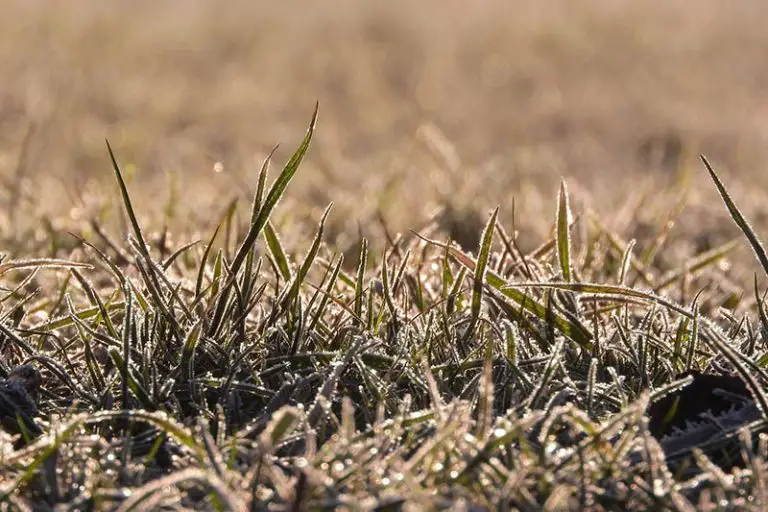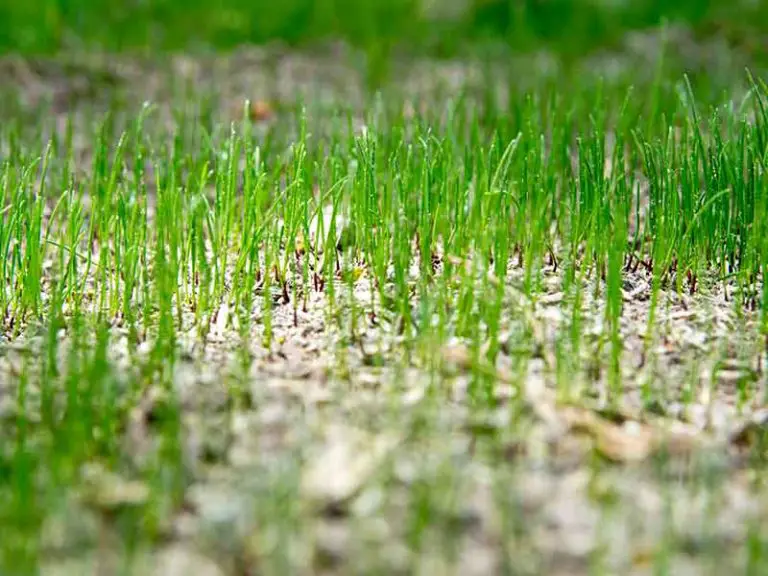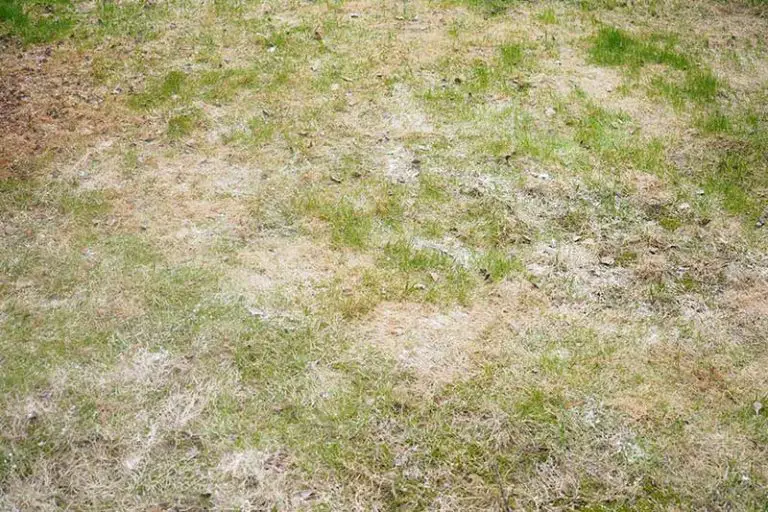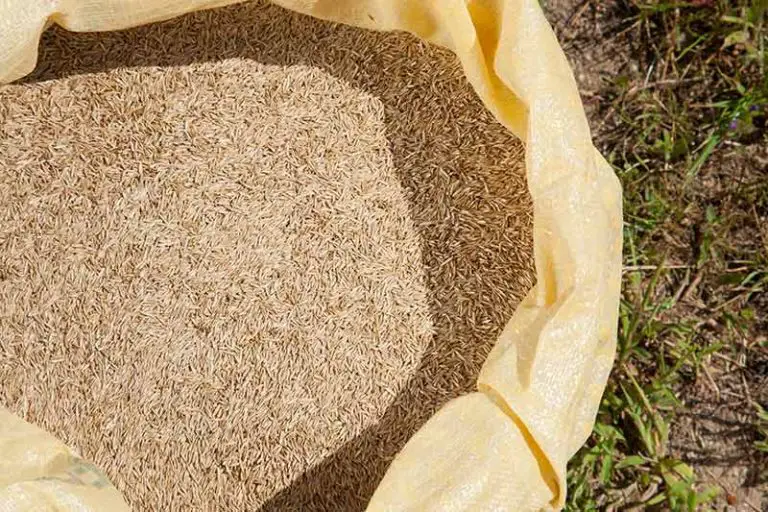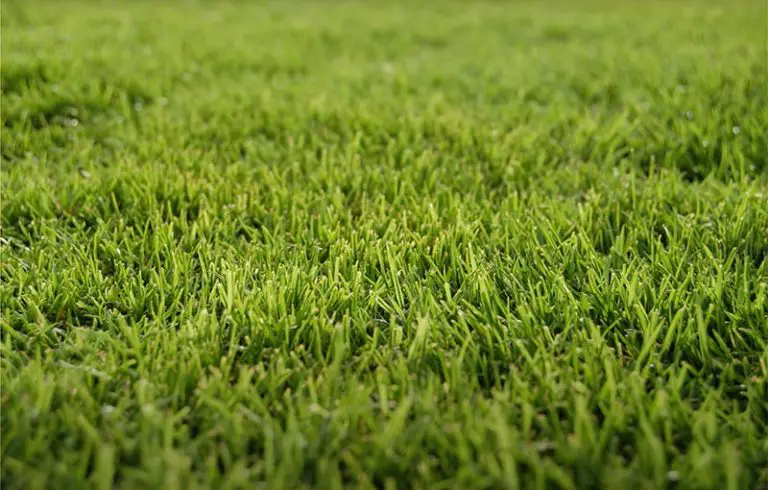Spring Lawn Makeover: How to Overseed for a Thicker, Healthier Lawn
Spring is one of the best times to overseed a lawn. For warm-season grasses, overseeding in spring is ideal, while spring is the next best time to overseed warm-season grasses, secondarily only to fall. By overseeding in spring, you can revive a tired or patchy lawn early in the growing season.
To overseed your lawn in spring, the basic steps include choosing a suitable grass seed, testing your soil, dethatching and aerating the lawn, and amending the soil, before planting your new grass seed. You must then water the lawn, continuing on with a suitable watering schedule for new grass until the seed matures.
What is Overseeding?
Overseeding is the process of adding new grass seed to an existing lawn. The traditional method of planting grass seed requires removing old grass and weeds to create a bare planting bed. Overseeding, on the other hand, is a seeding method that enables you to thicken your current lawn without removing the existing grass.

When is the Best Time to Overseed a Lawn?
The best time to overseed a lawn is during the active growth period for the grass you’re trying to grow. This timing will vary based on the region in which you live and the typical weather conditions in your area.
To determine the exact best time to overseed your lawn, you must first understand the type of grass you’re planting. All grasses are either classified as cool-season grasses or warm-season grasses; as the names suggest, each grass differs in its preferred growing conditions.
When to Overseed Cool-Season Grass
Cool-season grasses are common to the north, growing most actively in the spring and fall. The best time to overseed cool-season grass is therefore in the late summer to early fall when soil temperatures are between 50 and 60°F; this usually corresponds with temperatures from late August to early September in the north. The next best time to overseed cool-season grasses is in the spring.
When to Overseed Warm-Season Grass
Warm-season grasses are instead better suited to the south, growing actively from the late spring throughout the summer. This growth pattern makes the late spring to early summer the best time to overseed warm-season grass; these grasses germinate in soil temperatures of 65 to 70°F. It’s also possible to overseed warm-season grasses in the fall.
Can You Overseed in the Spring?
Yes, you can overseed in the spring, regardless of whether you’re growing cool-season or warm-season grass. For warm-season grasses, spring is the best time to overseed, while spring is the second best time to seed cool-season grasses.
For successful germination, grass seed requires consistently warm temperatures over the weeks following seeding. The new grass needs enough time in optimal growing conditions to become established and tolerant to stress. Overseeding in the spring provides the grass seed with these conditions; the weather is warm enough to support germination, without being so warm that it dries out the seedlings. The new grass will have enough time to establish itself before the heat and drought of the summer.
Why Reseed a Lawn in Spring?
There are many benefits to overseeding a lawn in spring. In addition to thickening up a thin lawn, overseeding helps to choke out weed growth, counteracts traffic damage, and ultimately reduces the maintenance requirements of your lawn.
Thicken an Existing Lawn
The main reason why homeowners choose to overseed in the spring is to thicken up a patchy or tired lawn; this is the best way to make a lawn green and thick without having to remove the old grass. You can either overseed the entire lawn, or plant the seed on concentrated areas of bare soil. Along with the existing grass, your new seed will grow in to fill the bare patches, resulting in a thicker, healthier lawn.
Choke Out Weed Growth Naturally
Overseeding a weedy lawn in spring is an effective way to control weed growth for the rest of the growing season. Invasive weeds will move in quickly to take over lawns with thin grass and bare soil; after overseeding your lawn, there will be little space for these weeds to grow. This is a great way to prevent spring-germinating weeds like henbit, dandelions, and chickweed from getting a foothold in your lawn.
Reduce Lawn’s Watering, Fertilization, and Pest Control Needs
In the long-term, overseeding in spring will ultimately reduce the maintenance needs of your lawn. Grass struggling from stressors like compaction and weed growth requires more care to stay alive than healthy grass. Once your new grass grows in and matures, your lawn will gradually require less water, fertilizer, and pesticides.
Counteract Traffic Damage
Foot traffic is a common cause for a struggling lawn with dead patches. You can counteract the effects of high traffic by overseeding in spring to replenish grass damaged by people, pets, or vehicles. Overseeding also gives you the opportunity to reseed with a high-traffic grass seed that will better tolerate the stress from regular usage.
When to Overseed in Spring
Overseed in spring when soil and air temperatures are within the range of the preferred temperatures of your chosen grass. As we’ve explained, this timing will vary depending on the grass type and the area in which you live.
- Overseed cool-season grass in the early spring when consistent soil temperatures reach to be between 50 and 60°F. This typically corresponds with air temperatures of about 60 to 75°F.
- Overseed warm-season grass later in the spring when soil temperatures are between 65 to 70°F. Air temperatures should be roughly 80 to 85°F.
You can determine when soil temperatures reach the suitable range by using a soil thermometer in the planting area. The top 3 inches of soil should measure to be within the ideal temperature range.
What’s the Best Grass for Overseeding?
The best grass for overseeding is one that will be compatible with your current grass and your area’s typical climate. You should also consider factors like shade tolerance, heat and drought tolerance, and resistance to traffic; overseeding allows you to create a lawn perfectly tailored to the growing conditions in your yard.
- The most common cool-season grasses include bentgrass, fine fescues, Kentucky bluegrass, and perennial ryegrass. You should choose one of these grasses for overseeding your lawn if you live in the northern, eastern, or western regions in the US.
- Popular warm-season grasses include Bermuda grass, Bahia grass, centipede grass, St. Augustine grass, and zoysia grass. These are the best grasses for overseeding if you live in the southern, southeastern, or southwestern states in the US.
Both grass types are found in the transition states due to the varying conditions in these regions. If you live in a transition state and you’re unsure which grass would be best, consult with a lawn care professional for further advice.
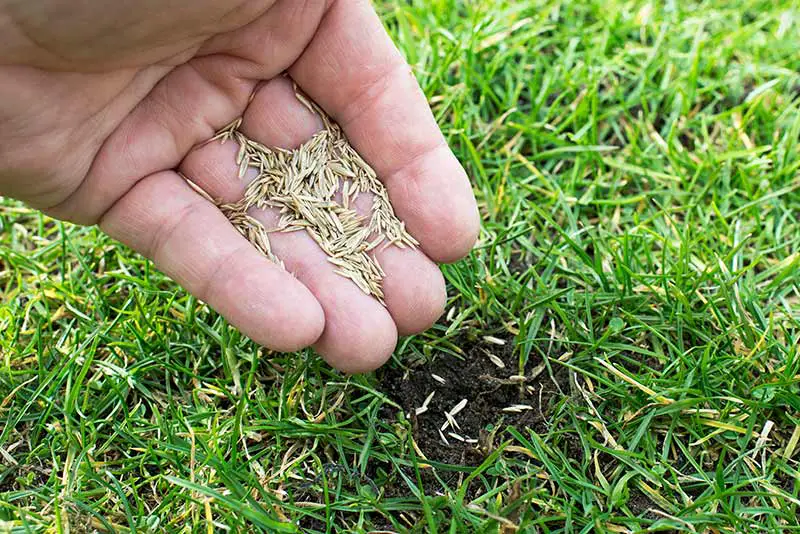
How to Overseed Lawn in Spring
Below, we have outlined the steps you should take to overseed your lawn in spring for best results.
1. Wait for Ideal Planting Conditions
According to your chosen grass seed, wait for the weather conditions to be ideal before starting the overseeding process. Soil and air temperatures must correspond with the preferred conditions of your particular seed.
As a reminder, the ideal spring conditions for grass germination are:
- Cool-season grass: soil temperatures between 50 and 60°F, air temperatures between 60 and 75°F.
- Warm-season grass: soil temperatures between 65 and 70°F, air temperatures between 80 and 85°F.
In addition to watching the weather forecast, you can monitor soil temperatures using an accurate soil thermometer. You can begin the seeding process when you’re sure that optimal weather conditions are expected for the following weeks.
2. Remove Debris From Lawn
Take a walk around your lawn and remove all debris from the soil surface. This step is important as it ensures full seed-to-soil contact, in turn improving the germination rate of your new grass.
Look for large stones, sticks, branches, and any other objects that may interfere with the seeding process. Gather the debris and dispose of it appropriately. Although you can do this by hand, it may be easier to use a rake for this step.
3. Mow Lawn Short
As another step towards improving seed-to-soil contact, mow the lawn as short as possible. This will allow more of the grass seed to fall onto the soil surface.
Lower your mower deck height so you can mow the grass to a height of 1.5 to 2 inches. Take care not to scalp the lawn by mowing too short or taking off too much (more than ⅓) of the grass’ height in one go. After mowing, rake and bag the grass clippings; you can either place the clippings in your compost or dispose of them suitably.
4. Test Soil
Before adding any amendments to the lawn, you should first test the soil. A soil test will reveal the soil’s current nutrient content and pH; you can then use this information to decide which amendments your lawn needs most to get it in optimal growing condition.
You can use one of two methods to test your soil. Your first option is to test your soil yourself using an at-home test kit; these kits are low-cost, easy to use, and will provide basic information about the nutrient and pH content of your soil. The alternative option is to send a sample of your soil to a lab for professional testing; the results of this test are much more accurate and in-depth, providing you with more detailed information about your soil.
5. Dethatch and Aerate Soil
There are a few more activities involved in preparing your soil for grass seed, including aerating and dethatching the soil. Proper preparation ensures you’re planting the seed into the best conditions to support the healthy germination and establishment of your new grass.
A key activity to carry out at this stage is to aerate the lawn using a core aerator. A core aerator is a tool similar to a rake, having a handle and a hollow tine at either end. This tool removes plugs of soil from the lawn to leave behind lots of 2-inch-deep holes in the turf. The main objective with core aeration is to break up soil compaction; this creates space for grass roots to grow and improves the circulation of air, water, and nutrients in the turf.
It’s also a good idea to reduce the thatch layer by dethatching the lawn. Thatch is the layer of tangled organic matter that sits atop the soil surface and below the grass’ blades. This layer can block your seed from reaching the soil, as well as blocking water and fertilizer. If necessary, dethatch your lawn using a rake, dethatching mower attachment, or motorized dethatching machine.
6. Amend Soil
After dethatching and aerating your lawn, add any amendments it may need as per the results of your soil test. This could include a particular fertilizer or pH-adjusting material depending on the current condition of your lawn.
The ideal pH level for grass growing is a pH between 6.5 and 7.0. If your soil is overly acidic, i.e. lower than 6.5, raise the pH by adding an alkaline material such as agricultural lime. Conversely, lower soil pH by adding an acidifying material like sulfur if your soil is over 7.0.
If your soil test reveals that the lawn is lacking any nutrients, you can amend this issue using a suitable fertilizer. All fertilizers come in different formulas of nutrients; this is represented by the ‘NPK ratio’ listed on the fertilizer’s packaging. Based on your test results, choose a product with the best fertilizer ratio to suit your lawn’s specific needs. It’s a good idea to add a starter fertilizer at this stage regardless of the results of your test; starter fertilizers contain the best balance of nutrients for new grass during germination.
7. Plant Grass Seed
Once it’s fully prepared, you can begin overseeding your lawn with your chosen grass seed. You’ll need a suitable spreader set to the correct seeding rate for your seed.
There are two main types of spreader you can use to overseed your lawn, either a drop spreader or broadcast spreader. Drop spreaders drop the seed directly below the equipment; they are therefore better suited if you’re overseeding small or concentrated areas on the lawn. Broadcast spreaders instead spray the seed in a fan-like pattern, making them the best choice if you’re overseeding an entire lawn.
You must set your spreader according to the seeding rate for your chosen seed. When referring to the packaging, make sure that you follow the ‘reseeding’ or ‘overseeding’ rate, rather than the regular seeding rate. With that said, you should use the regular seeding rate on any areas of completely bare soil.
8. Water Lawn
As a final step in the process, give the entire lawn a watering after you finish planting your seed. This is necessary to trigger the germination of your grass seed.
Water the lawn to moisten the top 6 to 8 inches of soil without making it saturated or soggy. You will then need to continue with a watering schedule for new grass; this involves watering 2 to 3 times per day over the weeks following seeding. Once the grass matures, you can reduce your watering sessions to once per week.

